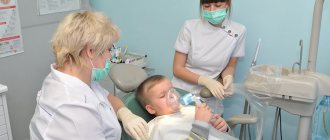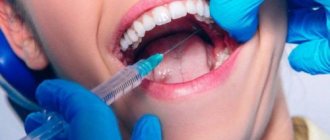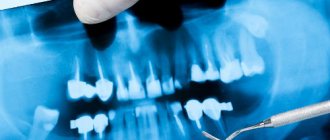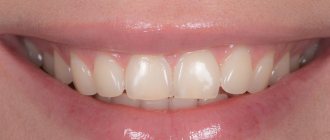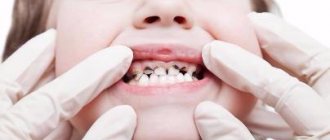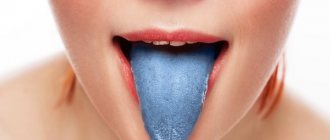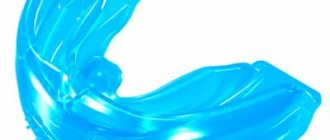A device with everything necessary for anesthesia in children.
There is such a wonderful phobia among people who encountered Soviet punitive dentistry in childhood - dental phobia. Back then it was believed that local anesthesia was invented for the faint of heart, and it was normal to endure the smell of burnt dentin and terrible pain for an hour. Despite the fact that now no sane dentist would treat without anesthesia, sad sad people still walk among us, traumatized by these memories. Sometimes such patients overcome themselves and come to the appointment with a panoramic photo of their teeth. More precisely, with a dozen dilapidated roots and many infected purulent foci in the bone structure of the jaw.
If people have already gotten used to the idea that children must be treated under local anesthesia, general anesthesia is still scary. Many still remember the difficult recovery from anesthesia with nausea and “helicopters” during the use of heavy old drugs. And people still have the feeling that any general anesthesia is something extremely dangerous and even more so unacceptable for use in children, except for emergency indications. In fact, everything has changed a lot.
In short, we will talk about anesthesia in children. And also about modern options with nitrous oxide, propofol and sevoflurane. They are very good, but remember that experimenting with them on your own may end up meeting Kurt Cobain.
STORIES
Content
Many children are afraid to have their teeth treated. And besides, sometimes you have to treat several teeth at once. The process may not be quick and it will be physically difficult for the child to sit quietly in a chair for more than 15 minutes. Therefore, treatment under sedation is ideal for children. The latest equipment and the professionalism of our doctors - pediatric dentist Tatyana Vladimirovna Ermakova and anesthesiologist Oleg Stanislavovich Markov - allow us to perform all the necessary procedures quickly and without pain, as well as provide the psychological comfort that is so necessary for young patients.
In what cases is the use of relaxing gas indicated?
It is most important to use nitrous oxide in dental treatment in children:
- First. If the child is not yet familiar with the doctor, the dental office, does not know what will happen to him, how he should react, etc., then in order not to injure him, nitrogen is used. In this case, the baby will not be disappointed, and further visits to the dentist will not become a stressful event for him.
- Preschool age. A child 3–5 years old often cannot sit still for more than 15 minutes. And treatment requires an average of 30–40 minutes. As a result, the time spent visiting the dentist is reduced, and the teeth remain untreated. If nitrous is used, then the child can sit quietly in the chair for as long as necessary to perform all the necessary manipulations.
Nitrogen is used in dental treatment in children only with the desire and consent of the parents.
What is sedation in pediatric dentistry?
Sedation is a special method of anesthesia based on the use of drugs that have a calming effect until you fall asleep. Some methods of sedation simply put the patient into a calmer and more elevated mood, with full preservation of consciousness, while others put the patient into a medicated sleep. For sedation, light and completely safe drugs are used that do not give side effects and do not put a serious burden on the body; they are easy to administer and quickly recover from this state.
Therefore, dental treatment for children under sedation is completely justified and even desirable, since it allows children not to experience pain and anxiety, which in previous times often became the cause of psychological trauma and dental phobia in adulthood. Once a child is convinced that dental treatment is painless and safe, he will visit the dental office regularly without any problems, which means he will have fewer problems with his teeth and will retain his own healthy teeth until old age.
A child in a state of sedation retains all reflexes: he breathes independently, can move and speak, is fully conscious - i.e. he sees, hears and understands everything as usual, only less excited and more relaxed, does not experience excitement and anxiety, therefore he calmly endures all the doctor’s medical manipulations.
Depth of anesthesia
Let's generally understand what anesthesia is.
Our brain is a complex set of neurons that constantly exchange impulses with each other. Some substances can inhibit synaptic transmission between certain groups of neurons. Moreover, different substances have different mechanisms of action and their own characteristics. In fact, anesthesia is also a type of anesthesia. Only in contrast to the local shutdown of local pain neurons, with local anesthesia we partially “turn off the brain.” As a result, general anesthesia is not like completely “turning off” the brain. This is rather a kind of very deep sleep, from which you can wake up only when the anesthesiologist allows it. What is suppressed first? For starters, this is consciousness. The main purpose of general anesthesia is to reduce the patient's stress level. We want to make sure that the entire treatment goes unnoticed by him and does not leave any unpleasant memories. In addition, pain sensitivity is suppressed and motor activity is inhibited. That is, with proper anesthesia, the patient is not in pain, and he does not try to get up and leave, pretending to be a sleepwalker.
Of course, suppression of the functions of the central nervous system should turn off only consciousness and pain, without affecting the important autonomous centers for the regulation of heartbeat, respiration and vascular tone. Only experienced doctors can provide all this correctly. There are usually four degrees of anesthesia depth:
- Superficial anesthesia.
- Light anesthesia.
- Full anesthesia.
- Ultra-deep anesthesia.
If necessary, the anesthesiologist can vary the degree of CNS depression, for example, to ask the patient to move the jaw correctly.
This can be done when using propofol, for example. Or, conversely, increase the depth if the patient begins to worry. Why are such methods needed at all if there is a conditional local articaine, which can most often be done? The problem is primarily panic fear and dental phobia. A good patient is a calm patient, not one who tries to run away in horror and flinches at every move the doctor makes. This will not benefit the patient himself and will not help the doctor to properly treat him. Additional arguments in favor of anesthesia will be a very pronounced gag reflex and a large volume of intervention. We cannot simply inject anesthetic into a patient, especially a small one. The local anesthetic also has maximum dosages for simultaneous administration, and, for example, bilateral conduction anesthesia on the lower jaw can cause difficulty breathing due to the complete loss of tongue sensitivity. Well, and most importantly, even the most sensitive doctor will never agree with a child to treat 15–20 teeth at the same time. Yes, it also happens when children do not brush their teeth properly, eat buns and do not go to the dentist.
Therefore, oddly enough, general anesthesia can often be an easier and more comfortable choice for a young patient and the attending physician.
What to choose for dental treatment for a child: sedation or anesthesia?
Some people confuse sedation with anesthesia, because in addition to superficial sedation, in which the patient is fully conscious, there is also deep sedation, when the patient is put into medicated sleep. But this is where the similarities with anesthesia end.
Anesthesia does not just mean falling asleep, it also suppresses a number of reflexes and has an analgesic effect. During sedation (even deep), both reflexes and pain sensitivity are completely preserved, so sedation must be supplemented with painkillers, otherwise the patient may wake up from pain at the most inopportune moment.
Children also undergo dental operations under anesthesia, but this happens quite rarely; special indications for this are required, as well as detailed tests and careful observation by an anesthesiologist, special equipment and permits. Therefore, anesthesia is not performed in every clinic, and sedation is performed in many. For deep sedation, the drug is administered through an intravenous catheter, and for standard use through a special mask (nitrous oxide).
Key drugs for general anesthesia
Before going into detail about how we use general anesthesia in children, let's go over a few key drugs. These are nitrous oxide, propofol and sevoflurane (better known by its commercial name Sevoran). Without them, it is difficult to imagine modern safe general anesthesia with easy and quick awakening. The correct use of modern methods is very important to ensure that the child can easily tolerate anesthesia.
Nitrous oxide
For quite a long time it was known exclusively as “laughing gas”.
The history of the medical use of nitrous oxide began in 1799, when sophomore Humphry Davy, who became an outstanding scientist, noticed that inhaling this gas caused euphoria and intoxication. During his experiments, he accidentally noticed that toothache disappeared under the influence of the gas. Don't ask what these experiments were. In 1844, Horace Wells performed the first dental operations under nitrous oxide anesthesia. Now it is one of the most common gases used to relieve pain sensitivity during small-scale manipulations.
Nitrous oxide has virtually no toxic effects when used correctly. It is metabolized: 99.996% of the gas is excreted unchanged during exhalation. Because of this, its effects are very short-lived and most often wear off within a minute of stopping the supply. Its safety profile is so good that it is used for pain relief in children and pregnant women during childbirth. In the second case, it is used in the so-called “anesthesia on demand” mode, when the woman in labor takes several breaths of a mixture of nitrous oxide and oxygen from a mask of a special device before the contraction begins. In this case, the fight is almost painless. Not as effective as an epidural, but it goes away much faster.
The main effects are achieved due to the antagonistic effect on NMDA receptors. Many synthetic opiates, such as tramadol, have similar effects. But unlike opiates, nitrous oxide is not addictive and does not suppress the respiratory center, which determines its high safety profile. Also, through a mechanism that is not entirely clear, endorphins are released, which triggers our internal mechanism for limiting pain sensations - the antinociceptive system. At the same time, the analgesic effect is quite strong and is approximately equivalent in strength to 15 mg of morphine. But nitrous oxide alone is not enough to do anything to the teeth, so it is used in combination with local anesthesia.
Mild euphoria and increased mood are achieved by stimulating the release of dopamine, judging by data from experiments on rats.
It also has an anxiolytic effect: it suppresses anxiety. In small doses, nitrous oxide increases the sensitivity of GABAA receptors. Anti-anxiety drugs from the benzodiazepine group work in much the same way. As a result, the patient’s anxiety decreases, he relaxes and shows slight drowsiness. There is also a slight anticonvulsant effect.
An overdose as such is also almost impossible. The main key point to monitor is the saturation of the patient to prevent oxygen deprivation. Well, if there is no anesthesiologist nearby and the action takes place in a nightclub, so that the patient does not have time to act up and hit protruding objects and security during his attack of Viking madness.
Brief summary: treating teeth with nitrous oxide is fun and safe, as long as we are not talking about very deep interventions. Then the pain still breaks through.
Propofol
Ampoule with propofol emulsion.
Propofol is another important drug in the practice of an anesthesiologist. The drug has a milky white color due to the fact that it is not a solution, but an emulsion. The active substance itself is insoluble in ordinary saline, so it is administered in the form of a stabilized emulsion with a phospholipid base.
The drug works interestingly. Surely you have seen in films how something is injected into a patient, and he instantly switches off. Propofol has exactly the same effect. Our brain is largely composed of fats, in which propofol is highly soluble. Therefore, the time from its administration to loss of consciousness is only a few seconds. It literally takes a few heartbeats to deliver the required dose of the drug to the central nervous system.
Interestingly, propofol only has a sedative effect, suppressing the activity of the central nervous system. At the same time, it does not suppress pain and tactile sensitivity. Therefore, it must be combined with local anesthetics. It also has a very funny feature: it causes retrograde amnesia, that is, the last thing the patient remembers after waking up is the events shortly before the drug was administered. Moreover, similar to sodium thiopental, propofol allows patients to be controlled to perform simple commands: stick out your tongue, close your mouth, open your mouth. That is, some contact is maintained, which is a big plus in some situations. Actually, it was precisely for this combination of amnesia and controllability that the same sodium thiopental was described in all spy novels as a “truth serum.” In fact, a real interrogation would be difficult to conduct, since the patient would most likely just mumble something incoherent.
Just propofol - you feel everything, it hurts, you follow simple commands and can even mumble incoherently: “Fuck off, I’m married,” but then you’ll forget everything. Propofol + a local remedy removes the pain from this situation, but you twitch and interfere with the doctor, your pulse can dangerously accelerate during the incision. Propofol + the same sevoran remove the pain and allow you to control the situation completely, but even turn off the level of consciousness that allowed you to moo.
Sevoflurane
A pleasantly sweet-smelling gas with the common commercial name “Sevoran” is one of the most convenient and safe options for inhalation anesthesia, having replaced halothane and isoflurane in modern anesthesiology.
It has become widespread due to its excellent safety profile and easy induction and recovery from anesthesia. With its advent, the typical “helicopters” with vomiting for long hours after surgery, characteristic of previous generations of drugs, are a thing of the past. Due to moderate relaxation of the respiratory muscles and general sedation, it suppresses the trigger zones of cough and gag reflexes.
This means that the doctor can work calmly, without fear that the patient will suddenly begin to feel sick or cough during the process of delicate manipulations (for which gastroenterologists especially love him during FGDS). In this case, the anesthesiologist continuously monitors the patient’s blood pressure and saturation. This is important to avoid even the slightest lack of oxygen supply in even the youngest patients. The laryngeal mask is inserted approximately like this.
Most often, it is used in a mixture with nitrous oxide and oxygen to induce anesthesia. When the patient falls asleep, the face mask is changed to a laryngeal mask. Then the patient’s breathing is controlled by the ventilator. At the same time, the introduction of a laryngeal mask for inhalation anesthesia in children differs from adults. Children have a different structure of the larynx and different angles of insertion. For example, we always take into account the characteristics of children with relatively short necks or malocclusions. A good doctor working with children will do this as gently as possible - so that the child will not have any unpleasant sensations in the larynx after waking up.
Is nitrous oxide sedation safe?
The experience of countries with developed medicine (Russia, European countries, Israel, the USA) shows that nitrous oxide sedation for children is completely safe. It has been used for several decades and doctors have collected extensive observation material on people who have undergone repeated treatment under sedation and anesthesia. No negative health effects (including delayed ones) were identified until they reached adulthood.
Nitrous oxide sedation in pediatric dentistry is one of the safest types of anesthesia - the combination of nitrogen and oxygen is natural for us, since we constantly breathe a nitrogen-oxygen mixture. Nitrogen is easily eliminated from the body within a few minutes after the end of sedation. It does not cause allergic reactions, does not affect nervous activity (except for a short-term calming effect) or other body systems.
Which anesthesia option is better?
So, we went over the main properties of drugs for general anesthesia.
Now let's look at which options are better in each specific case. There are no identical children, they are all different. Some children will calmly accept the placement of a catheter at a very young age, while others will refuse a painless mask at the age of eight or nine. Therefore, we always carefully communicate with both the baby himself and his parents. This is necessary to establish trusting contact between the doctor and the little patient. Without this, it simply won’t be possible to work normally. At the same time, the most detailed information on the child’s health characteristics is collected so that the anesthesiologist can choose the most comfortable and safe option for general anesthesia. Interestingly, children very quickly begin to trust doctors if they see that everything was painless and the tooth no longer bothers them. As a rule, further treatment is much easier. We had a case when a girl fell from a swing in kindergarten, hit herself and lost an artificial crown, which almost three of her had to install. As a result, she returned to the clinic with her parents, brought the crown in her palm and asked to return it to its place.
Local anesthesia only
Suitable for
: brave children of all ages who trust the doctor.
This option is a little beyond the main topic of our post, but I also want to mention it. If a child initially comes with a bunch of damaged teeth, and for some reason intimidated by relatives, then such a scenario may be impossible. But it is necessary to treat. This is where the entire arsenal of general anesthesia tools will help us.
Local anesthesia and nitrous oxide
The child should have free nasal breathing. Nitrous oxide has a bunch of effects that we need. It relaxes, eliminates anxiety, and slightly improves your mood. The patient will be conscious during treatment. At the same time, in its pure form it will not be possible to numb the pain; preparing teeth will still be painful. Therefore, we usually let the child breathe through a special mask that covers only the nose. Many people really like this, plus we often tell stories about test pilots who also have special masks with a breathing mixture.
When the child relaxes, you can apply topical anesthesia with gel and then inject the main anesthetic. Unfortunately, under nitrous oxide it will not be possible to do a large amount of intervention at once. Children get tired of lying with their mouths open, and the mask begins to irritate them. Therefore, this method is better suited for small one-step interventions - one or two teeth. At the same time, we cannot increase the concentration above 50% for a child; we need to look for other, stronger, but safe drugs.
Local anesthesia and sevoflurane
Sevoflurane can be given to school-age children without any problems, but there are several nuances.
With older children, it is easier to agree on local anesthesia while awake or the use of propofol with intravenous administration. There are several advantages to completely turning off consciousness, which does not happen with nitrous oxide. Firstly, the child does not experience extreme stress and does not develop dental phobia for the rest of his life. There is nothing worse than a stern nurse who kneels on you and holds a mouth opener while the doctor frantically tries to do something in the oral cavity.
Secondly, this allows for high-quality treatment when the doctor is confident that the patient will not twitch, start waving his tongue, or try to run away in the middle of an important stage.
The anesthesiologist can vary the depth of anesthesia by changing the composition of the gas mixture. This makes it possible to accurately monitor the patient’s vital signs and ensure the desired level of relaxation and immobility. If you need to treat caries, then there is no point in injecting an additional anesthetic. The degree of CNS suppression is sufficient to make the patient comfortable. If you plan to treat pulpitis or periodontitis, or remove teeth, we additionally administer a local anesthetic. Otherwise, pain impulses will still reach the “sleeping” brain and cause a surge of adrenaline and involuntary movements. When consciousness is completely turned off, we can carry out any amount of intervention. Moreover, we are talking not only about some painful things like treating six carious teeth in one go, but also, for example, about taking accurate impressions for the subsequent production of orthopedic and orthodontic structures. Try convincing a sobbing four-year-old that he needs to sit still while the silicone in the impression tray hardens in his mouth.
Local anesthesia and propofol
This is prohibited for a child under three years of age to use. We have already discussed the features of propofol above. It does not have an analgesic effect, but only suppresses consciousness. This is why it must be supplemented with local anesthesia, as if the patient were awake. But its main advantage when working with teenagers is that they can follow simple commands. This makes the doctor's work easier. You can reduce the depth of anesthesia and ask to bite down on a template, model the structure based on the bite, or something similar. It is important for the dentist not just to depict fillings at the site of carious defects, but to carefully model the occlusal relationships of the jaws so that after treatment the biomechanics of chewing are ideal.
Is local anesthesia needed when using sedation?
Since nitrous oxide sedation only has a calming effect, then yes, local anesthesia is required, otherwise the child will experience pain (or other discomfort) during treatment. Sedation allows you to give a pain-relieving injection to your child unnoticed and prolongs the effect of the anesthetic.
Even routine treatment of dental caries in children under sedation requires local anesthesia. The purpose of sedation is to relieve psychological stress and calm down - otherwise the child simply will not allow him to do anything. And to eliminate pain is the task of local anesthetic drugs.
What are the advantages of the gas used?
Nitrogen, or rather its combination with oxygen, is considered the most acceptable means of sedation for a child, since the drug is used in low concentrations that can cause slight depression of consciousness while maintaining all reflexes and contact with the outside world. The doctor can talk with the small patient during the procedure. The latter is even allowed to watch cartoons.
Nitrogen does not have a very pronounced sedative effect. This means that the child will behave more compliantly during the procedure; he will not need to be restrained by force, traumatizing the psyche.
Another undeniable advantage of medical gas is that it is hypoallergenic and has no irritating effect on the respiratory tract. The compound is completely inert. It does not react with blood elements. Its effect on the body stops immediately after the supply of the gas mixture is stopped during dental treatment.
Indications and contraindications for sedative dental treatment in children
Typically, indications for sedation are hyperactivity, the child’s fear of doctors (especially when there has already been a previous negative experience of treatment), and the need for long-term treatment (for example, several teeth). But today, more and more people are choosing treatment under sedation, even if it’s just professional teeth cleaning.
Treatment under sedation is contraindicated for children only in certain cases:
- under the age of 3 years, since the patient must maintain verbal contact with the doctor,
- in the presence of respiratory diseases - with nasal congestion, it is extremely difficult to breathe through the nose, and the effect of nitrous oxide is greatly weakened,
- recent traumatic brain injury (in the previous 3 months),
- chronic otitis (especially in the acute stage),
- neurological diseases and seizure syndrome,
- the patient has epilepsy.
The last contraindication, unfortunately, is absolute. Nitrous oxide can increase intracranial pressure in such patients and provoke an attack. Sedation is also not used for patients in a state of panic fear - if the child is already hysterical, sedation will not help.
How to prepare for the sedation procedure?
It is necessary to strictly adhere to the recommendations given by the doctor, namely:
Before performing drug sedation, it is necessary to do a general blood test, coagulogram, ECG, biochemical blood test, tests for HIV, HCV, HbsAg, Rw. These studies are required for the safety of the patient himself. General preparation for the procedure is usually carried out directly in the dental clinic itself. Patients are advised to refrain from eating and drinking 4 hours before the procedure.
The doctor should be aware of whether the child has respiratory problems, in particular whether he has difficulty breathing through his nose. In the case of such diseases, the sedation procedure loses its effectiveness to some extent. Be sure to tell the dentist what medications your child took on the day of the clinic visit.
Preparation and stages of the procedure
Children do not require any special preparation for treatment under sedation. If you are very worried and in doubt, you can take a general blood test, give your child a cardiogram, show the doctor a medical card that notes previous and chronic diseases, and tell about your doubts.
Otherwise, it is better to try to avoid strong emotions on the eve of the procedure and do not feed the child too much. If your child is quite sociable, then you don’t have to tell him about the procedure - the doctor himself will explain everything to him. If the baby does not trust anyone except his parents, then you can prepare him in advance by telling him in general terms what the doctor will do.
In the office, before the procedure begins, the doctor will explain to the little patient what sensations await him, and during the game he will help him climb into a chair and put a “space” mask on his nose. After just a few breaths, treatment can begin. The baby will watch cartoons or listen to what the doctor is saying, while the dentist performs the required therapeutic actions.
Advantages of SM-Dentistry
- Qualified pediatric dentists Specialists have extensive experience working with children and are well versed in child psychology. They know how to conduct treatment in a playful way. Our little patients love visiting dentists, are happy to come for preventive examinations and understand their importance.
- Comprehensive services The center’s dentists monitor the condition of the jaw apparatus of small patients from the moment the first tooth appears. They take into account all the anatomical features of the child and select the optimal treatment option. Doctors teach the child and parents how to properly perform oral hygiene.
- High-quality materials We use exclusively certified materials and medicines from world-famous manufacturers. We use only anesthetics that are safe for children. The clinic is equipped with the most modern equipment for the diagnosis and treatment of dental diseases.
You can find out more details and sign up for a consultation with a specialist by calling: +7
, or by filling out the form:
Coming out of a sedative state
At the end of treatment, the anesthesiologist turns off the nitrous oxide supply and increases the oxygen supply through the mask, which ensures faster removal of nitrous oxide from the patient's lungs. 5 minutes after the end of the treatment procedures, not even a trace of the sedative remains in the child’s body. Local anesthesia wears off after 1.5-2 hours. The child does not experience any consequences (such as dizziness or nausea, familiar to many from the effects of surgical anesthesia) after sedation. In rare cases, after sedation, a child may remain in an unusually calm state until the end of the day.
How long does the gas last?
The gas mask can be used for as long as the dentist needs to work. The process can last 10, 30, or 60 minutes. And no matter how long the child is under the influence of the drug, his condition will not be worse or better. The effect of dinitrogen oxide mixed with oxygen (ZAX) stops immediately when the supply from the cylinder is stopped. Residual effects may appear within half an hour.
How can a person in a state of sedation respond to any verbal signals?
During human development, the part of the brain responsible for speech functions and verbal activity forms a certain automatism, which is subsequently triggered in certain situations, for example, emergency ones. It is these mechanisms that people who practice NLP influence.
Nitrous oxide - oxygen sedation, relieves anxiety, removes negative memories of the manipulation itself, which is especially important if this is a complex surgical procedure: removal of eighth teeth, implantation, especially massive if, for example, the patient is completely edentulous. No matter how hard the doctors try and no matter how high-quality the anesthesia is, the unpleasant sensations from the same sinus lift or removal of wisdom teeth cannot be eliminated. As you know, a lot depends on the type of nervous organization of a person. People who lead a very active, stressful lifestyle have a lower pain threshold, and the nervous system is often exhausted and more easily excitable. They are the most common candidates for sedation.

